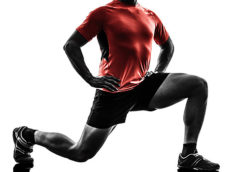Being a dogmatic D-bag is no way to go through life. But read the comment section on any fitness page, and you'll find disagreeable people who get bent out of shape when anyone does anything different than them.
While there's room for healthy debate, some people take new ideas, exercises, and even equipment selection as an affront to their ideology. Here are three topics they get overly sensitive about:
Some lifters make it a point of pride not to use, or ONLY use, certain pieces of equipment:
- People who join the kettlebells-only cult because they believe the kettlebell is somehow superior to all other heavy objects.
- Individuals who think if you don't squat, deadlift, and bench press with a barbell, you're not "really" strength training.
- Those who believe soft tissue work is a waste of time.
Here's a better philosophy: There is no best piece of equipment, nor is there a piece of equipment that's never worth using. There are only tools in your toolbox.
Saying soft tissue work is a waste of time for everyone or that you will only use kettlebells or barbells is like being a carpenter and saying, "forget screwdrivers, I'm only using hammers!"
Good luck trying to get really strong in the squat using just kettlebells or dumbbells. You'll quickly out-grow the amount of weight you can clean and hold in the front rack position.
Likewise, if your goal is long-term shoulder health, you probably shouldn't do all your pressing exercises with barbells. Pressing with dumbbells is a better fit for many.
Every piece of equipment has a particular use:
- Barbells are fantastic for building tremendous levels of strength due to the amount of load you can put on them.
- Dumbbells are awesome for people with banged-up shoulders who need a little more freedom for their shoulders to move during pressing.
- Kettlebells are great for repeated power movements like kettlebell swings, or for loaded carriers such as farmers walks.
- Foam rollers can free up restricted tissue, which can help with pain relief and get people moving better.
Why would anyone decide one of these tools isn't worth putting in their toolbox?
As a coach, I want every tool at my disposal to create the best possible plan for my clients. I want to find exercises that fit their current abilities, not force them into exercises they aren't ready for yet.
Using a piece of equipment that's better suited for your body doesn't make you a wimp. It's a sign that you're intelligent.

Most dogmatic lifters and coaches think if you're not pulling the bar with a conventional stance, you're not deadlifting. They think the trap bar is for newbies, and they crap on the sumo stance because it's "cheating."
If this was the case, then why does the "car deadlift" event in strongman have a very similar frame as a trap bar deadlift? And if a sumo stance is cheating, why is it allowed in powerlifting competitions?
Stronger is stronger. It doesn't matter if you're using a trap bar, a sumo stance, or a conventional stance. If you're getting stronger in the hinge movement pattern, you're making progress.
Pick the piece of equipment or stance that feels right for your body, and enjoy getting stronger without your back bothering you all the time. If you're using good form and lifting more weight – or doing more reps with the same weight as you were in previous months – you're getting stronger. Piss on anyone who tries to put you down for it.

While exercise technique and cueing are important, one cue may work better for some individuals than others.
Here's one example. When you bench press, should the bar go straight up or up-and-back in a J pattern? Both of these cues could be a great choice for a particular lifter, yet people get their panties in a twist over which cue is "correct."
I use both cues regularly. It depends on what the person I'm training is doing. If I'm spotting someone and they start to fail the lift with the bar going towards their stomach, I'll tell them to drive the bar up and back.
If someone begins to lose the bar over their face with their elbows bending as if doing a skull crusher, I'll tell them to focus on driving the bar straight up and down.
Neither of these cues is wrong. The best cue is the one that gets you to lift the most weight with the best technique while staying injury-free.
Here's another example: When you squat, should you distribute your weight evenly on your foot, or should you "smash your heels into the ground?"
While your weight should technically be distributed evenly between the base of your big toe, the base of your pinky toe, and heel to create a tripod foot, I use the cue "smash your heels into the ground" often. It's a better cue for a new lifter whose heels raise off the floor when squatting. It addresses the biggest problem and fixes it quickly.
As we progress through our sessions, I remind them of the tripod foot, but saying "push your heels into the ground" is the cue they need most in the beginning.
While there are bad cues and exercise techniques, it's a waste of time arguing about ones that work just fine for a lot of people and whose differences are minor.
If you discover a new cue or form tip, try it. If it doesn't work for you, move on to one that does. Don't waste your day arguing with a complete stranger on the Internet about something so trivial.





